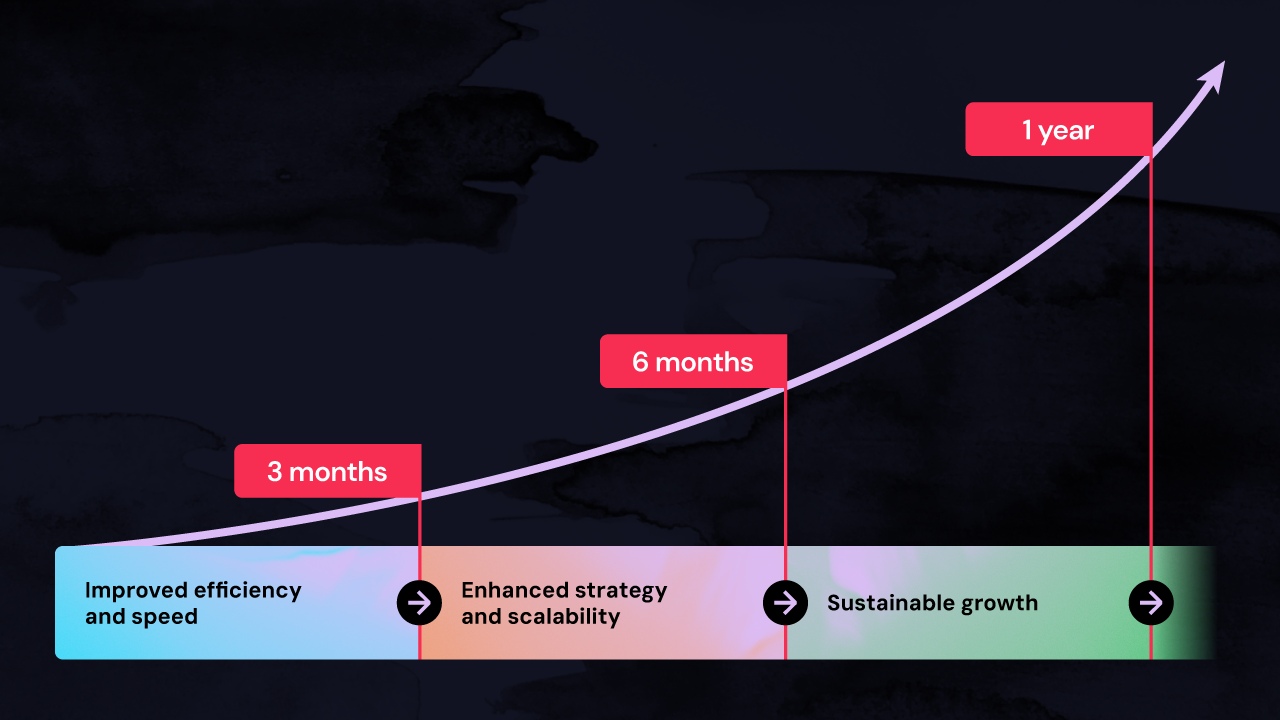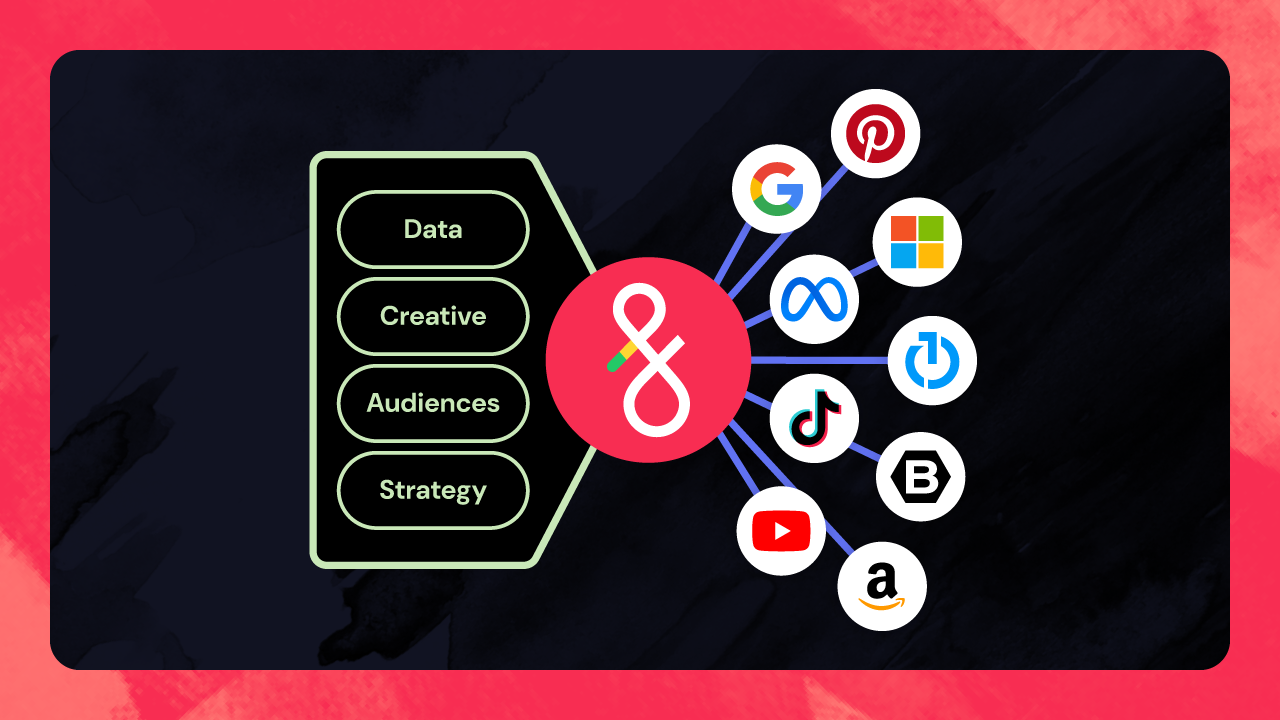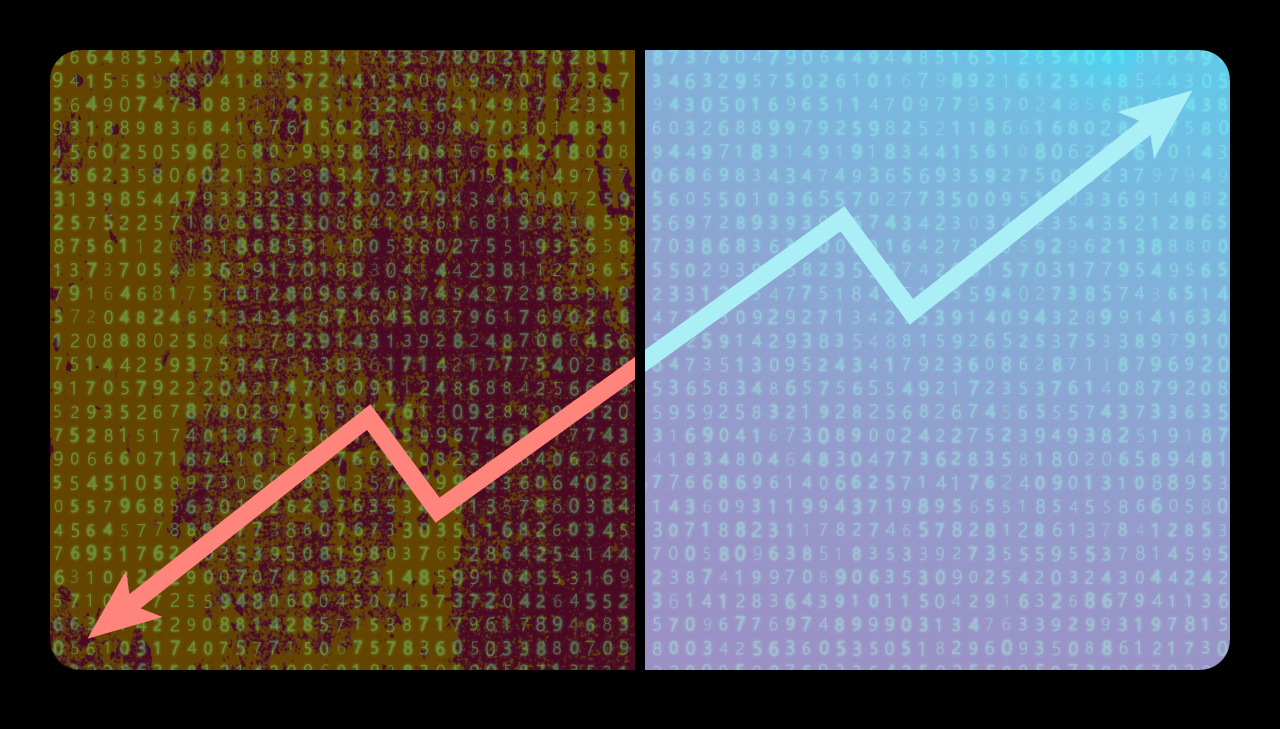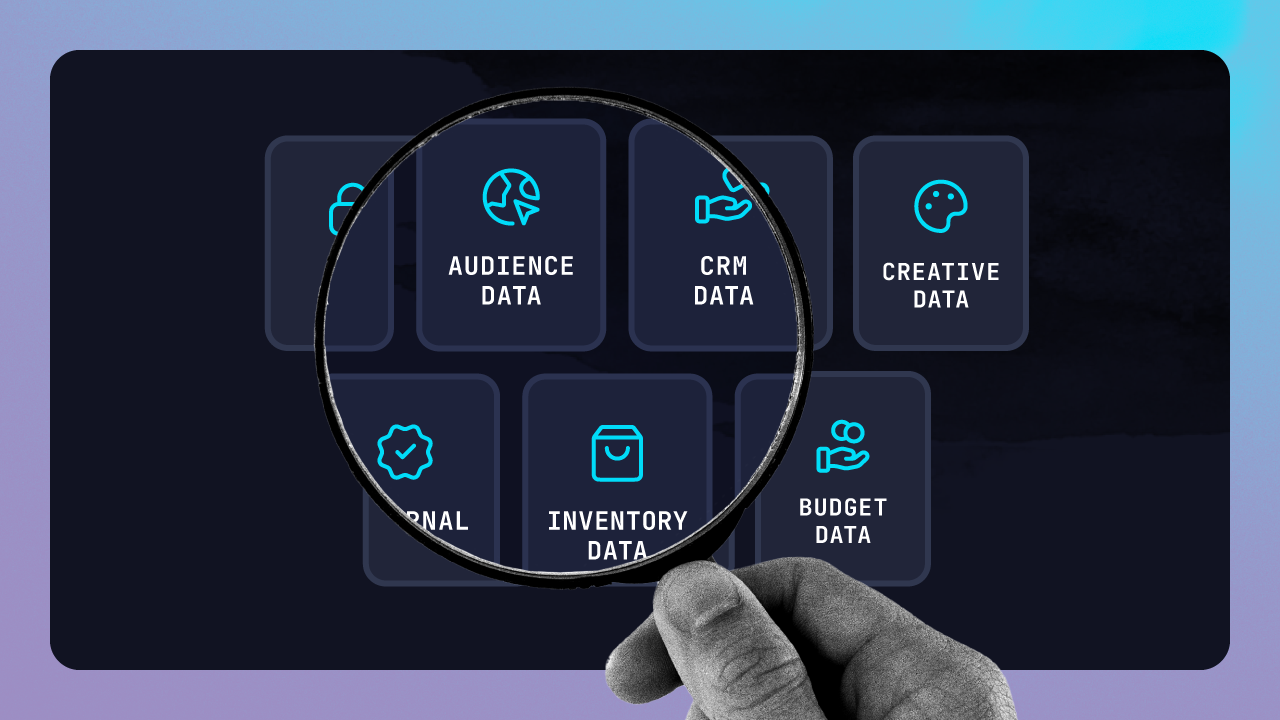Adopting automation into your digital advertising operations requires a strategic and transformative shift, not just the flip of a switch. This might leave you wondering what you and your AdOps team can expect during this evolution.
A strong action plan for your first 12 months with automation is critical for hitting your growth goals. The following roadmap draws from paid media execs who have taken this journey.
This guide lays out what to expect in your first year of integrating AI-powered AdOps automation, including key milestones, best practices, and foundational wins at each stage based on client-reported achievements. You can use this article to get clear, direct answers as you navigate your own automation journey and aim to maximize ROI from your tech investment.
What should I expect in the first 3 months of using AdOps automation?
This initial phase focuses on establishing operational stability within your advertising operations. In the first three months, you should expect to see foundational quick wins in efficiency and speed within core daily workflows, such as budgeting, reporting, and account management.
As manual work decreases, you will notice fewer errors and more predictable campaign performance. This gives your teams a more manageable work rhythm, encouraging proactive and strategic work instead of scavenger hunts for problems. Better workload predictability means more breathing room for top talent and more time to work on back-burner projects that move your company forward.
Best practices for the first three months of AdOps automation:
- Automate manual tasks for key workflows: Start by automating your team’s most time-consuming and/or repetitive workflow, like reporting or campaign setup. Offloading a core bottleneck to automation means immediate time savings and error reduction.
- Centralize cross-channel performance metrics: Using a Digital Advertising Operating System (DAOS) means you can consolidate data from every major publisher into a single system. This gives your team better oversight in their day-to-day management and dramatically improves real-time optimizations.
- Focus on core accounts: Use the time you save on execution to reduce waste and drive better results for your most important accounts.
What results do executives see in the first 90 days with advertising automation?
According to advertising executives that we surveyed, automation lays the groundwork for future scaling and growth. Here is self-reported data from advertising executives after their organizations used AI-powered automation for three months:
- 81% of executives reported faster account setup and campaign launches
- 81% of executives reported improved operational scalability
- 76% of executives reported fewer manual processes
- 67% of executives reported reduced budget over/underspend
Common follow-up questions for months 1-3:
What AdOps tasks are easiest to automate first?
Advertisers usually start with tasks that are repetitive and rule-based. The easiest and most impactful tasks to automate first include cross-channel performance reporting, budget pacing and tracking, and bulk campaign creation or updates.
What tools should I use to start automating my advertising operations?
Look for a centralized system that can help you manage your AdOps holistically, often called a Digital Advertising Operating System (DAOS). A DAOS can integrate with all major ad platforms (e.g., Google Ads, Meta Ads, Basis, Amazon DSP, etc.) and consolidate data from these channels. Connecting a DAOS with ad publishers via bi-directional APIs is essential for automating reporting, budgeting, and campaign management across channels.
What should I expect in the first 6 months of using AdOps automation?
As your team achieves operational stability in the first six months, they will spend more time driving high-impact strategic initiatives. They’ll have more time to focus on improving performance, building stronger client relationships, and diversifying channel strategies.
Yes, you may still shave some time off your AdOps workflows, but the majority of advertisers use this stage to build on their initial operational gains. By the six-month mark, most advertisers have standardized processes across the organization. This ensures consistent, high-quality campaign execution: a must for scale.
Best practices for the first six months of AdOps automation:
- Expand automation’s scope: Once you’ve laid down some fundamental automation rules, think about how you can apply automated strategies to new verticals, channels, or clients. Start with low-effort tests to understand opportunities without taking on new risks or complicating what’s working.
- Standardize and unify AdOps workflows: You can’t scale if you’re building custom strategies and workflows for every account. Identify and codify repeatable processes for everything from campaign launches to reporting. Defining standard operating procedures (SOPs) for core AdOps workflows is critical for maintaining speed and quality, both as you scale and as you integrate automation.
- Bring real-time insights into your strategy: Accessing multichannel data within a single, centralized system makes it easier to optimize campaigns with less effort and time. Solutions like a DAOS even let you adjust or reallocate budgets across channels based on real-time performance signals.
What are some key outcomes after using advertising automation for six months?
According to our latest survey data, advertising teams using AI-powered automation see a clear shift toward strategic capacity and scalability after six months. The benefits move beyond simple time savings to fundamentally changing how teams operate:
- 90% of ad teams launched campaigns faster.
- 71% of executives saw standardized processes implemented across their teams.
- 50% of ad teams managed more accounts with the same number of staff.
- 50% of ad teams had more capacity to focus on client strategy.
Common follow-up questions for months 4-6:
How can I standardize advertising campaign management processes across different teams?
The key to AdOps standardization (and scale) is using a centralized system as your AdOps single source of truth. Create templates and defined procedures within the system for common, repeatable tasks: for example, campaign setup, budget management, and client reporting. This ensures everyone follows the same steps, leading to consistent strategic execution and operational scale.
Not sure where to start? Here are our recommendations for establishing standardized AdOps processes.
How does using AI-powered advertising automation impact my business after one year?
The cumulative effect of AI-powered automation snowballs into a significant driver of sustained growth and profitability for advertisers after one year. What starts as early operational wins adds up to a measurable financial impact, particularly for large-scale or multi-location advertising operations.
Our survey data shows that advertising teams can handle more accounts with the same workforce, directly improving profit margins without sacrificing quality or fueling burnout.
Instead of working in fragmented silos, your AdOps teams operate as a cohesive, high-speed team capable of executing complex multichannel strategies flawlessly. With automation managing the bulk of campaign execution tasks, your talented staff is finally free to focus on providing clients with strategic insights and performance results.
Best practices after using AdOps automation for one year:
- Unify teams around multichannel strategies, not channel-specific efforts: To scale your operations, you must break down the walls between channel-specific teams. Organizing teams around clients rather than channels often leads to better results, more valuable insights, and stronger strategies. Using a DAOS means your teams can work across platforms more easily to run comprehensive multi-channel strategies.
- Launch new services and channels: With automation handling the heavy lifting, many advertisers find they can expand into new channels or offer new services with minimal effort and risk.
- Maximize accounts managed per employee, without burnout: Optimized and automated workflows help each employee manage large portfolios more effectively. This means your company can increase revenue without adding headcount. For example, one of Fluency’s enterprise media clients found that one of their search campaign managers could easily manage over 600 accounts with automation.
- Embed advertising-specific AI into your daily workflows: Utilize AI that integrates directly into your Digital Advertising Operating System (DAOS). Tools like Muse can securely access multichannel performance data, helping your team identify optimization opportunities and generate data-backed recommendations. This shifts your human teams’ focus from manual analysis to strategic action.
What results do executives note after using automated AdOps for 12 months?
After a full year, advertising executives report substantial business growth and a clear return on their automation investment, with a strong emphasis on long-term scalability.
- 84% of agency executives report that AI-powered automation directly improved revenue growth.
- Executives reported that the average time to achieve a positive ROI with a DAOS is 8 months.
In our latest survey, executives noted that automation enabled their teams to scale operations, launch new clients with ease, and manage complex campaigns efficiently in one place. One executive noted, "With automation, the team can handle more accounts at the individual level and scale client growth for the organization."
Common follow-up questions about automation at the 1-year mark:
How does automation help advertisers launch new services or channels?
Bringing in automation means taking the time to standardize the executional foundation of your ad operations so you can scale these tasks with automation. When you want to launch a new service, like advertising on a new social platform, you can create (or duplicate) a workflow template from within a tool like a DAOS. This makes the process repeatable and scalable from day one, drastically reducing the time and risk involved in expansion.
One of our enterprise clients, Dealer.com (a Cox Automotive brand), saved 550 manual hours using Fluency to expand their services to Amazon Sponsored Display.
What does it mean to incorporate AI into daily AdOps workflows?
Fully integrating AI into your workflows means you’re using specialized AI for suggestions and predictions. For example, an AI tool like Muse can analyze real-time performance data and recommend budget shifts between ad sets, campaigns, or channels to maximize ROI. Integrated AI can turn multichannel data into actionable, strategic advice for your team.
From operational wins to sustained profit: Is advertising automation worth it?
This 12-month roadmap illustrates how AdOps automation can turn your current operational efficiencies into a powerful engine for sustained growth. By automating manual tasks, standardizing workflows, and embedding AI into your daily campaign management work, your team can move from reactive problem-solving to proactive, strategic execution.
If you’re currently evaluating whether or not AI-powered automation is the right solution for your advertising operations, know this: bringing in this kind of technology is not just about saving time or making incremental channel-specific improvements. Tools like a DAOS will help you improve profitability, scale your workload without increasing operating costs, and give human teams more capacity to deliver superior client value.
For a complete understanding of how to scale your AdOps effectively, download our free guide, "The Executive Guide to Scalable Advertising Operations." This guide gives you a full framework for revolutionizing your digital advertising operations and future-proofing your business.






